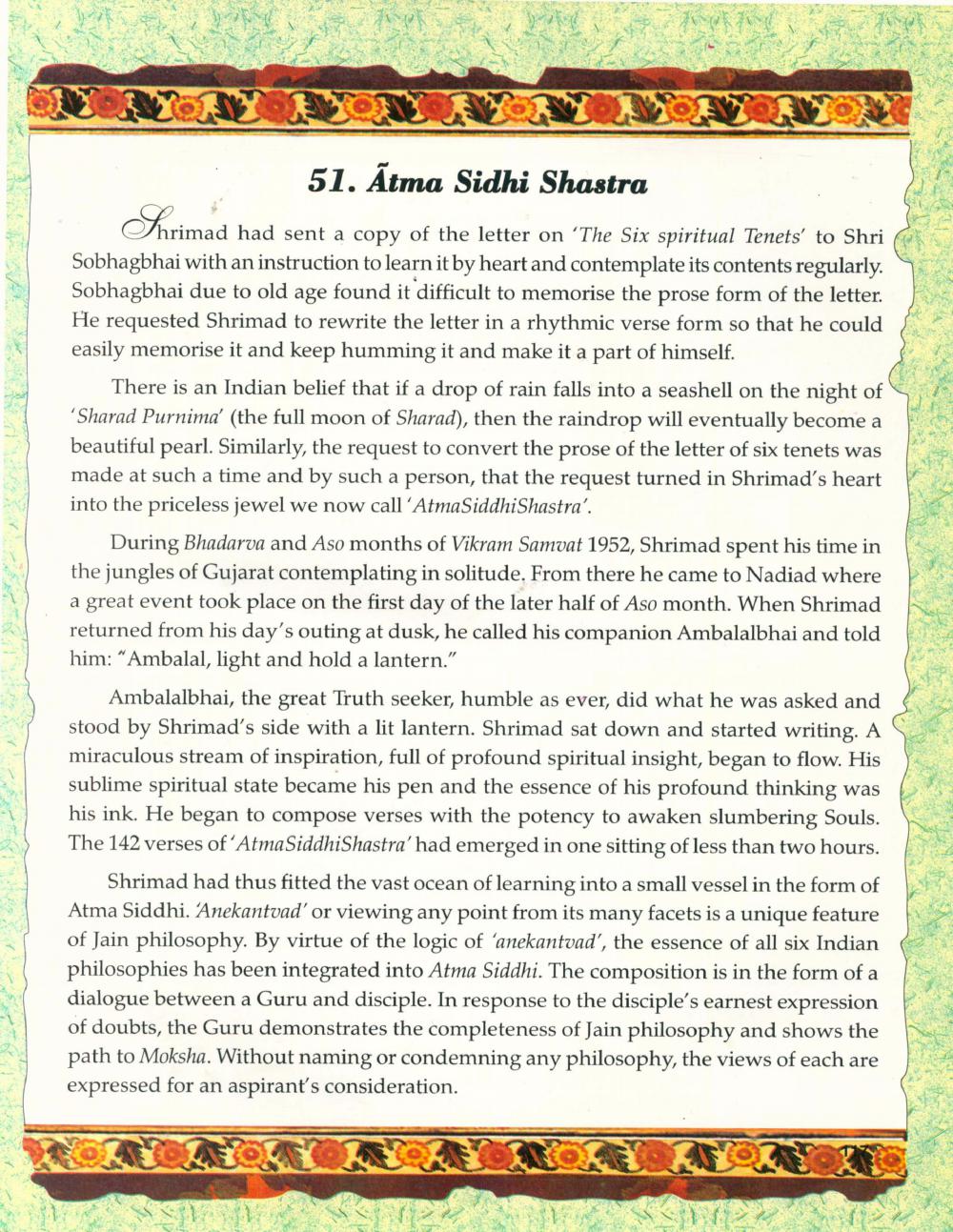________________
51. Atma Sidhi Shastra
Shrimad had sent a copy of the letter on 'The Six spiritual Tenets' to Shri Sobhagbhai with an instruction to learn it by heart and contemplate its contents regularly. Sobhagbhai due to old age found it difficult to memorise the prose form of the letter. He requested Shrimad to rewrite the letter in a rhythmic verse form so that he could easily memorise it and keep humming it and make it a part of himself.
There is an Indian belief that if a drop of rain falls into a seashell on the night of 'Sharad Purnima' (the full moon of Sharad), then the raindrop will eventually become a beautiful pearl. Similarly, the request to convert the prose of the letter of six tenets was made at such a time and by such a person, that the request turned in Shrimad's heart into the priceless jewel we now call 'AtmaSiddhi Shastra'.
During Bhadarva and Aso months of Vikram Samvat 1952, Shrimad spent his time in the jungles of Gujarat contemplating in solitude. From there he came to Nadiad where a great event took place on the first day of the later half of Aso month. When Shrimad returned from his day's outing at dusk, he called his companion Ambalalbhai and told him: "Ambalal, light and hold a lantern."
Ambalalbhai, the great Truth seeker, humble as ever, did what he was asked and stood by Shrimad's side with a lit lantern. Shrimad sat down and started writing. A miraculous stream of inspiration, full of profound spiritual insight, began to flow. His sublime spiritual state became his pen and the essence of his profound thinking was his ink. He began to compose verses with the potency to awaken slumbering Souls. The 142 verses of AtmaSiddhi Shastra' had emerged in one sitting of less than two hours.
Shrimad had thus fitted the vast ocean of learning into a small vessel in the form of Atma Siddhi. Anekantvad' or viewing any point from its many facets is a unique feature of Jain philosophy. By virtue of the logic of 'anekantvad', the essence of all six Indian philosophies has been integrated into Atma Siddhi. The composition is in the form of a dialogue between a Guru and disciple. In response to the disciple's earnest expression of doubts, the Guru demonstrates the completeness of Jain philosophy and shows the path to Moksha. Without naming or condemning any philosophy, the views of each are expressed for an aspirant's consideration.




